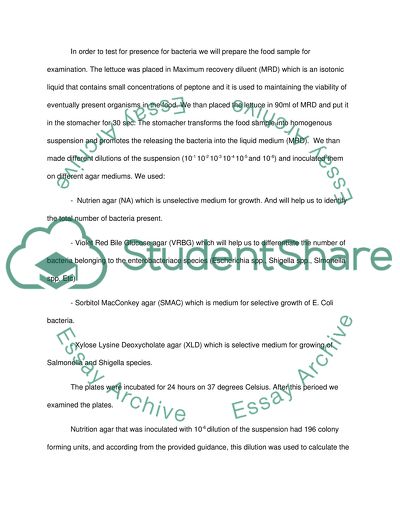Cite this document
(Isolation, Enumeration, Identification and Confirmation of Lab Report, n.d.)
Isolation, Enumeration, Identification and Confirmation of Lab Report. Retrieved from https://studentshare.org/health-sciences-medicine/1573349-isolation-enumeration-identification-and-confirmation-of-food-poisoning-microbes-from-food-lab-report
Isolation, Enumeration, Identification and Confirmation of Lab Report. Retrieved from https://studentshare.org/health-sciences-medicine/1573349-isolation-enumeration-identification-and-confirmation-of-food-poisoning-microbes-from-food-lab-report
(Isolation, Enumeration, Identification and Confirmation of Lab Report)
Isolation, Enumeration, Identification and Confirmation of Lab Report. https://studentshare.org/health-sciences-medicine/1573349-isolation-enumeration-identification-and-confirmation-of-food-poisoning-microbes-from-food-lab-report.
Isolation, Enumeration, Identification and Confirmation of Lab Report. https://studentshare.org/health-sciences-medicine/1573349-isolation-enumeration-identification-and-confirmation-of-food-poisoning-microbes-from-food-lab-report.
“Isolation, Enumeration, Identification and Confirmation of Lab Report”, n.d. https://studentshare.org/health-sciences-medicine/1573349-isolation-enumeration-identification-and-confirmation-of-food-poisoning-microbes-from-food-lab-report.


